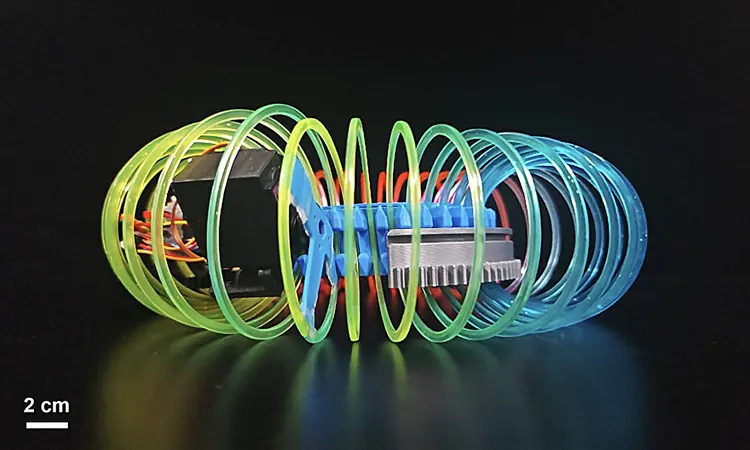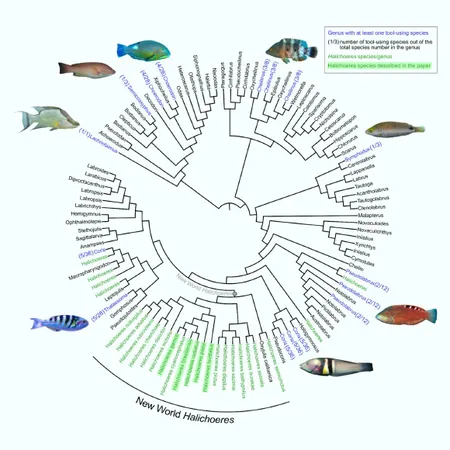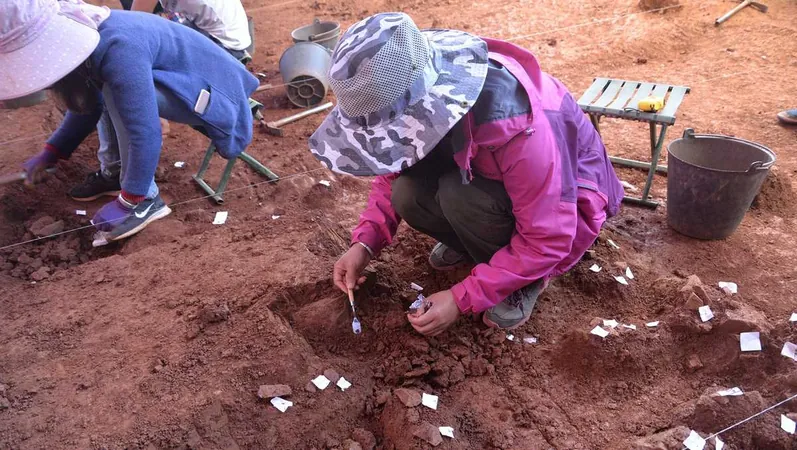
Meet WHERE-Bot: The Groundbreaking Wheel-Less Robot That Moves in Any Direction!
2025-03-27
Author: Wei Ling
Introduction
In the world of robotics, innovation is the name of the game. Scientists and engineers have spent decades engineering machines that can traverse the most challenging terrains—be it land, air, or even water. Typically, these robots are equipped with sophisticated sensors and cameras to navigate their surroundings and avoid collisions. But what if a robot could move seamlessly without all that tech?
Introducing WHERE-Bot
Enter the revolutionary WHERE-Bot, developed by a team of researchers at Tsinghua University. This cutting-edge robot distinguishes itself as a wheel-less, everting soft robot, which means it navigates by inverting its body structure. Recently unveiled in a paper on the arXiv preprint server, WHERE-Bot's ingenious helical ring design allows it to move effortlessly in all directions without needing sensors to assess its environment.
Inspiration Behind the Design
According to Shuguang Li, the senior researcher on the project, the idea sprang from a playful moment with a Slinky toy during a lab meeting. "What if we took the head and tail of the spring and connected them?" he mused. This simple modification led to the concept of the 'everting' motion, allowing the robot to perform an endless inside-out turning action, capturing the imaginations of researchers and serving as a strong foundation for further exploration.
Dynamic Movements and Mechanism
The research team first analyzed the characteristics and movements of helical rings, gaining insights into how this unique structure reacts when placed on different surfaces. This resulted in the creation of WHERE-Bot, which exhibits unpredictable and dynamic motion patterns. "At a glance, its movement might seem random," said Siyuan Feng, the lead author of the study. "However, it's the robot’s uneven mass distribution that contributes to its ability to move. When it rolls onto the ground, friction causes it to self-rotate and lean toward the heavier side, creating a fascinating orbiting motion."
Inherent Abilities and Exploration Potential
Where WHERE-Bot truly shines is in its inherent ability to navigate unpredictable environments without external props like cameras or sensors. "We turned a basic spring toy into a mobile robot with extraordinary movement capabilities," Li explained. Remarkably adaptive, the robot mirrors the instincts of a reptile by retracting when it encounters an obstacle, ensuring it never gets stuck during exploration.
Potential Applications
But the potential applications of WHERE-Bot stretch far beyond mere maneuverability. Future versions could aid in exploration tasks like mapping the interiors of caves, excavating sand to reveal hidden artifacts, inspecting pipelines, or even transforming recreational activities with designs for new omnidirectional bumper cars.
Future Developments
The researchers have ambitious plans for WHERE-Bot's evolution, focusing on increasing its robustness and functional versatility. As Dengfeng Yan, a co-author of the study, pointed out, "Currently, the robot's spring structure is made from plastic, which can fail under extreme strain. We intend to experiment with more resilient materials to improve durability."
Enhancements and Innovations
Furthermore, the team is looking to enhance the robot with innovative features such as high-friction skins, propellers, and barbed elements to expand its capabilities across various environments—from sandy deserts and underwater to navigating through tight pipes and even soaring through the air.
Conclusion
In a landscape where robotic mobility often relies on complex technologies, WHERE-Bot offers a refreshing glimpse into the future of robotics: practical, efficient, and highly adaptable machines moving gracefully through whatever challenges lie ahead. Watch this space—WHERE-Bot is just getting started!



 Brasil (PT)
Brasil (PT)
 Canada (EN)
Canada (EN)
 Chile (ES)
Chile (ES)
 Česko (CS)
Česko (CS)
 대한민국 (KO)
대한민국 (KO)
 España (ES)
España (ES)
 France (FR)
France (FR)
 Hong Kong (EN)
Hong Kong (EN)
 Italia (IT)
Italia (IT)
 日本 (JA)
日本 (JA)
 Magyarország (HU)
Magyarország (HU)
 Norge (NO)
Norge (NO)
 Polska (PL)
Polska (PL)
 Schweiz (DE)
Schweiz (DE)
 Singapore (EN)
Singapore (EN)
 Sverige (SV)
Sverige (SV)
 Suomi (FI)
Suomi (FI)
 Türkiye (TR)
Türkiye (TR)
 الإمارات العربية المتحدة (AR)
الإمارات العربية المتحدة (AR)